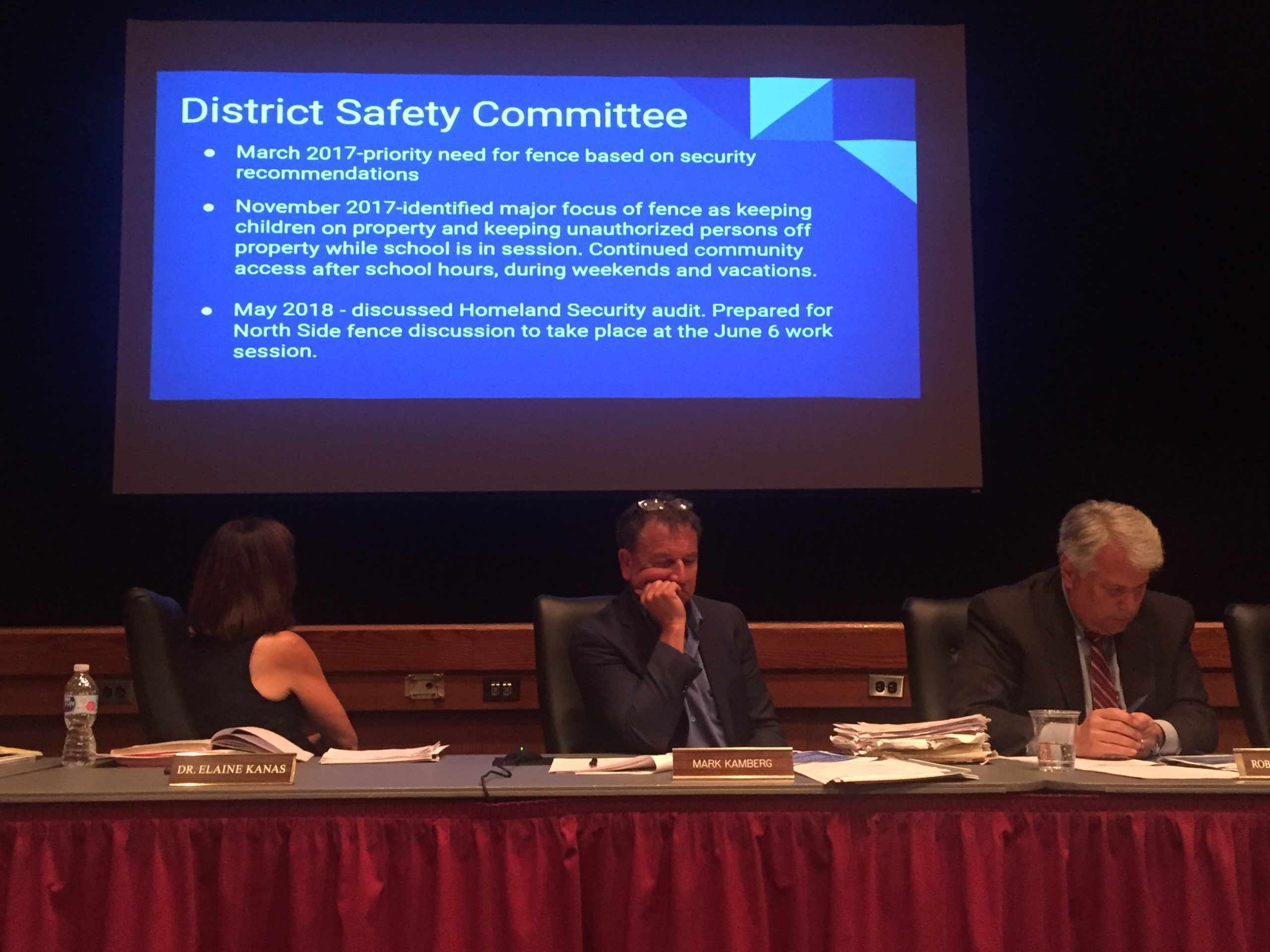A resident unhappy about the dispute between the Village of East Williston and the school district over the height of a proposed fence at an elementary school has accused the district of a lack of openness.
Construction of the proposed 6-foot aluminum fence at the North Side Elementary School has been halted by a temporary restraining order issued by a state judge.
The conflict is over whether the East Williston school district must file a building permit with the village and adhere to the village zoning code. The village contends that the fence will violate the code because it would be two feet above the maximum. The district argues that it does not require village approval.
The parties are scheduled to appear in state Supreme Court on Sept. 25.
At a Board of Education meeting on Sept. 9, Diane Castonguay, the assistant superintendent for business, presented a Powerpoint timeline of the events regarding the fence since 2017. The timeline, residents said, omitted a May 7 letter from the state Education Department.
“Although the School District gave a lengthy powerpoint presentation on the timeline and status of the fence, it omitted critical facts and information,” East Williston resident Maureen Chappo wrote in a letter to Blank Slate Media.
After residents referred to the May 7 letter, the board said that it would be included in a more detailed timeline posted by the district online.
The May 7 letter was sent to the district by Rosanna T. Groff, a coordinator with the Education Department’s Office of Facilities Planning.
Groff’s letter said that the department’s approval of the school’s building project “is separate and distinct from any local zoning approval” with specific reference to the fence and that “the district is advised to resolve any potential local zoning issues related to this project directly with the Village of East Williston.”
Chappo said that it was only after residents “strongly objected and peppered the School Board with questions and comments” that the board acknowledged the letter and subsequently stated that the documentation would be added to the presentation and posted online.
The letter is included in a more detailed timeline that is available via a Google Drive link at the end of the 20-slide Powerpoint presentation.
“There were two letters from SED both of which will be posted on the website tomorrow,” school board President Mark Kamberg said at the Sept. 9 meeting.
During the public comment period of the meeting, Kamberg noted that not every letter was included in the Powerpoint timeline.
“We did not reference each individual letter included. In that is the village correspondence with us as well,” Kamberg said. “We did footnote it at the end of the presentation to say that all correspondence would be posted as a link within the presentation effective tomorrow.”
John Sheahan, an attorney representing the district, did not respond to requests for comment but he addressed the May 7 letter during the Sept. 9 board meeting. Sheahan said the letter has been “mischaracterized.”
“There is also a recent letter from the state Education Department clarifying their May 7 letter,” Sheahan said. “There is no requirement by the state Education Department. There’s nothing directing or admonishing the district to file for a building permit with the village.”
The district’s more detailed timeline included another letter from Groff that she wrote at the request of the district’s attorneys to “clarify the purpose of my letter to you dated May 7, 2019, which was written in response to correspondence received by the Village of East Williston dated April 16, 2019.”
Groff wrote that the purpose of the letter was to “alert the school district that there may be additional local zoning approval required” and to suggest that the district should consult directly with the Village of East Williston in that regard.
Groff wrote that the May 7 letter was not meant to either confirm nor deny that adhering to the village zoning code was required.
“My letter was not intended to direct or admonish the District and took no position as to whether or not local zoning approval was required under the circumstances,” Groff wrote.
Sheahan has argued that the April 11 approval by the state Education Department is all that is required for the project to move forward.
“There has never been a school district in the state of New York that has had to file two building permits,” Sheahan said.
“Why do the residents have to bring these facts to light? The school district superintendent and school board give the impression that they are not obligated to be open and forthcoming with the Community and that they are above the laws and regulations of NYS and Village of East Williston,” Chappo wrote. “In doing so, they are losing the public’s trust.”
Kamberg said at the meeting that the lawsuit has cost the district up to $56,000 in legal fees.
In an August newsletter sent to residents by East Williston village Clerk Marie Hausner, she wrote that the village board, through its legal counsel, sent a letter to the East Williston school district “months ago” asking it to file an application for a permit and comply with the village zoning requirements.
Rather than doing so, the school district initiated legal action (an Article 78 proceeding in court) to require the withdrawal of the village’s letter, Hausner wrote.
“We are responding appropriately in the legal action,” Hausner said.
Hausner said that the village is not for or against the fence, but rather wants the district to adhere to village zoning code requirements.



